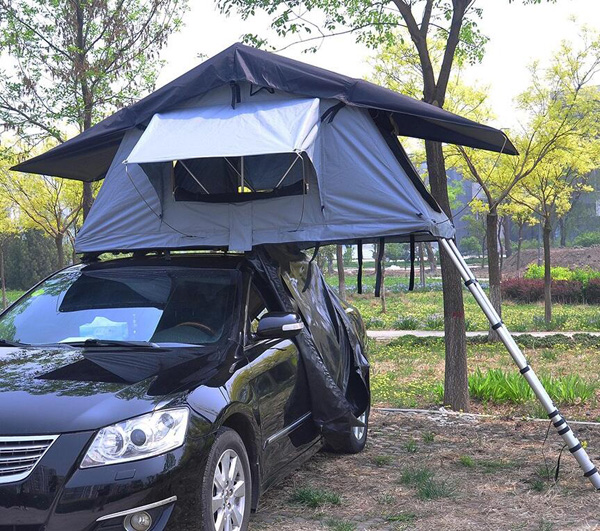- E-mail: info@sundaycampers.com
- Tel.: +86 15801504548
Long before social distancing became a requirement, many of us regularly sought to escape civilization. Two methods of achieving this goal, land-based and off-grid camping, have become hugely popular in the last decade. While it's great to get away from home, off-grid doesn't necessarily mean eliminating all comforts. With the right rooftop tent, you can enter a relaxed, go-anywhere sleeping space that's almost as comfortable as your bedroom at home. Here's what you need to know before you use a rooftop tent.
● Pros and cons of rooftop tents
●Installing a rooftop tent on your car
●Installing a rooftop tent
● Other things to consider

Spend any time on YouTube and all of the most drool-worthy land-based platforms seem to have expensive rooftop tents. Their ubiquity makes them seem like a necessity for anyone who has seriously considered a land-based. If you're looking for one, it's important to understand their pros and cons to determine if they're right for you.
The two best reasons most car campers choose a rooftop tent are convenience and comfort. The best models are designed to be ready in a matter of minutes. In most cases, all that is required is to find a relatively flat parking spot, undo some straps or latches, and raise the roof (literally). Even mid-range models have hydraulic struts to assist with the latter, so it requires near-zero effort. Most models are durable and strong enough to survive even the most intense storms, which makes them more weather-resistant than traditional tents. What's more, a growing number of rooftop tents are also equipped with built-in foam mattresses that stay inside the tent, whether open or closed.
However, rooftop tents have two drawbacks. The first and most important is the price. Even entry-level models can set you back around a thousand dollars. In fact, most people will want to spend the extra money on a mid-range model, which can easily run $2,000 or $3,000 or more. Still, even considering the truck or SUV you're attaching the tent to, the total is likely to be less than an RV. Another consideration when buying a rooftop tent is the extra drag it will put on your vehicle. There's really no way around this problem. Suffice it to say, there is. Just know that the extra weight will reduce your fuel economy.
● Convenient
● Comfortable
● Price
● Resistance and weight

If you decide that a roof tent is right for you, the next thing to consider is finding the right model for your vehicle. The first step is to check your vehicle's owner's manual (if it includes a factory-installed roof rack) or aftermarket roof racks. Most will specify if they are compatible with roof tents.
Each roof rack is capable of carrying a maximum static load and a maximum dynamic load. Static weight is the weight that the rack can carry when the vehicle is stationary. This is rarely an issue, as most car roofs are designed to avoid rollover accidents. However, take a moment to calculate the weight of the tent, as well as the weight of the occupants and their gear, to make sure your roof rack is strong enough to support everything.
Dynamic weight indicates the amount of weight the frame can support when the vehicle is in motion. The heaviest roof tents weigh hundreds of pounds, so it's vital to know if your car's luggage rack can handle all that weight. If the tent becomes a deadly projectile on the highway, then finding it won't be a welcome surprise. Aftermarket roof racks tend to be stronger than factory alternatives. If you find that you need something more robust, Sunday Campers offers a number of options.
Roof tents are usually simple to install. Because of their weight, having a strong partner to help with installation is essential. Assuming you have carefully checked the compatibility of your new tent with your existing roof rack setup, a few bolts, clips, latches, etc. should be secured. The installation should take no more than 20 to 30 minutes from unpacking to completion. Also, once opened, you don't need to worry about it for the foreseeable future.
It may seem obvious, but be sure to check any shipping costs when purchasing a new rooftop tent. Some high-end manufacturers include "free" shipping because the customer has already paid a premium for their product. However, in many cases, shipping costs can be high since the average weight of most tents is between 100 and 200 pounds. Buying a tent in-store may be worth it.
Another thing to consider is whether you want a hard-top tent or soft-top tent. Hard-top models are usually heavier and more expensive, but they are also more durable and easier to pitch. Fabric models require more maintenance and care to make sure they dry properly. However, they are also lighter and more affordable.
Some of the higher-end models include some nice accessories, such as built-in awnings or separate covered living spaces. Modular units are also available, allowing buyers to expand their tent setup in the future.